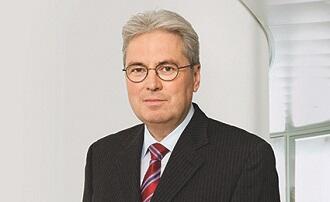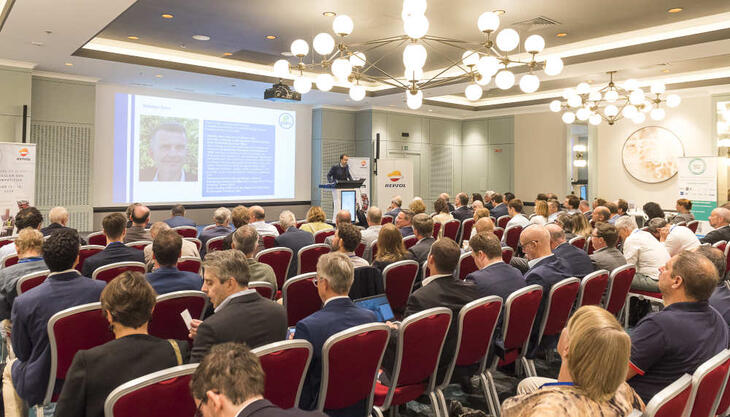European chemicals: competitiveness at risk, stability needed

The competitiveness of European chemicals was one of the main issues discussed at the general meeting of Cefic (the European chemical industry council) held on October 7 in Florence. At a key time where the fifth largest manufacturing industry is facing continuous competitiveness challenges by exploring new markets and developing new products, the European association representing the chemical industry has reinforced the need for an investment-friendly and attractive Europe. Hariolf Kottmann (photo above), CEO of Clariant and new president of Cefic, also confirmed this, by saying: "I am honoured to have been appointed as President of Cefic, building on the achievements of Mr. Clamandieu during his term. My priority will be to focus on the continuing innovative role of our industry to address competitiveness challenges posed by other global regions."
The economic report presented during the assembly, in addition to launching the alarm on competitiveness at the risk of chemicals in Europe, however also highlighted their capacity to respond, especially in relation to research into new markets. According to the report, diversification is a key factor, demonstrated by the sector also in relation to trade surplus in specialty chemicals, consumer products, and polymers. Trade surplus is still generated in the United States, Brazil and other Asian nations, but there is a deficit with China, India and Japan. The report confirms that Asia still dominates, its chemical production growth exceeds the rest of the world, drawing investments even from EU countries and dominating investment in R&D and capital investment.
 For the
third year in a row, the European chemical industry registered negative growth,
down from €536 bn in 2014 to €519 bn in 2015, with an overall share in the
world market down from 17.3% to 14.7%. "What we’re seeing
is what we’ve predicted for many years now – Asia’s
fast-growing market coupled with the US shale boom means Europe needs to act
fast to stay competitive. Fuel, feedstock and energy costs are Europe’s
Achilles’ heel, making ethylene costs twice
in the EU than it does in the US despite low oil prices. Ethylene is the
building block for many other sector products and has a massive impact on our
ability to remain competitive,” said Marco Mensik, managing director of Cefic,
pointing out how energy costs and bureaucracy are undermining profitability.
For the
third year in a row, the European chemical industry registered negative growth,
down from €536 bn in 2014 to €519 bn in 2015, with an overall share in the
world market down from 17.3% to 14.7%. "What we’re seeing
is what we’ve predicted for many years now – Asia’s
fast-growing market coupled with the US shale boom means Europe needs to act
fast to stay competitive. Fuel, feedstock and energy costs are Europe’s
Achilles’ heel, making ethylene costs twice
in the EU than it does in the US despite low oil prices. Ethylene is the
building block for many other sector products and has a massive impact on our
ability to remain competitive,” said Marco Mensik, managing director of Cefic,
pointing out how energy costs and bureaucracy are undermining profitability.
Investments have also had a direct impact on the competitiveness of chemicals. The United States has announced more than 265 major chemical industry projects, valued at over 170 billion dollars; China continues to draw investments. As a result, Europe needs to increase its appeal as a draw for investment in research and production of innovative and high value chemical products. In particular, it has to increase its rate for moving from research to development and the sale of new products.
New markets will continue to gain importance in a world that is attempting to identify solutions for major societal challenges, such as energy efficiency to curb climate change. European chemical companies can also take advantage of the robust growth of the Chinese market and, despite the difficulties, the market is showing signs that the EU chemical industry is continuing to climb out of the post-crisis period with a solid trade surplus. Cefic expects modest growth for the end of 2016 and for 2017.
As far as
Italy is concerned, Cesare Puccioni (photo below), president of Federchimica,
said: "Even here in Italy, economic, international political and petroleum
uncertainties are having a negative impact, keeping the level of demand low and
the fragmentary pattern of purchases that has characterized the long crisis unchanged."
A good result for exports, and the level of domestic demand has held, leading to 1.5% growth in production in the first part of 2016, a year which, however, is expected to end without further improvement. Italian exports are up, though not as much as in 2015, and they will continue to be an important factor for development. The rise in Italian chemical exports is higher than most European manufacturers. In particular, fine and specialist chemicals are registering a trade surplus that continues to rise, and that in 2015 reached almost € 2.8 bn. This ability to prevail over foreign markets is the result of a technological advancement process for products, through innovation that is increasingly based on research conducted in numerous SMEs. A synthetic indicator of competitiveness processed by Istat places chemicals at the top of the classification for the ratio between productivity and cost of labour, profitability, propensity for exports, and share held by innovative companies.
"We are in a virtuous sector, from a sustainability standpoint, as well as in terms of innovation and continuous investment in research and development. Because of its characteristics of complexity, the chemical industry must, however, be able to operate with a framework as solid as possible when it comes to regulations and their application. This need is even more pressing, considering the instability of the political and economic situation, including on a global level," Puccioni added.
During the meeting, Cefic awarded Covestro for its efficient and environmental compatible use of carbon dioxide in the production of plastic.


















